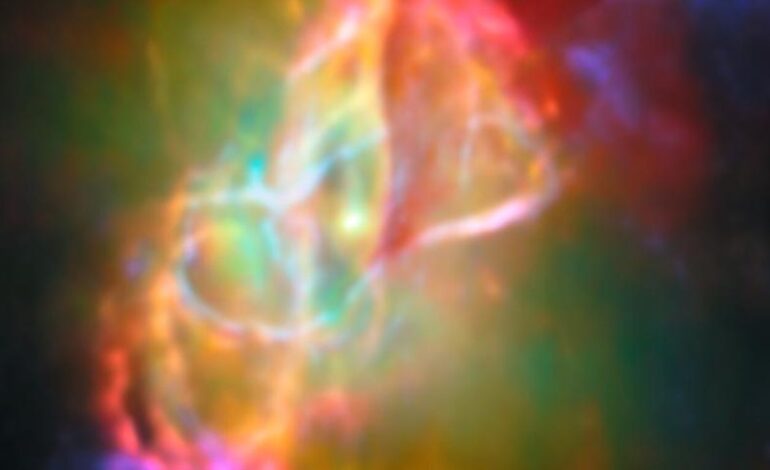James Webb Space Telescope Discovers Dust Forming Exoplanets

The James Webb Space Telescope (JWST) has made a groundbreaking discovery, observing cosmic dust particles forming around a dead star for the first time. This phenomenon occurs in the Butterfly Nebula, also known as NGC 6302, located approximately 3,400 light-years away in the constellation of Scorpius. This finding marks a significant advancement in understanding the origins of planetary building blocks.
The Butterfly Nebula is a planetary nebula resulting from a sun-like star that has exhausted its hydrogen fuel for nuclear fusion. The outer layers of this star have expelled into space, creating a nebula, while the extremely hot core, radiating at 220,000 degrees Celsius (396,000 degrees Fahrenheit), remains as a white dwarf. The structure of the nebula features two large lobes resembling wings, with a torus of dark dust at its center.
New Insights into Planet Formation
Using its Mid-Infrared Instrument (MIRI), JWST captured detailed images of the central torus within the Butterfly Nebula. Interstellar dust, typically around 0.1 microns in size, has been detected in larger grains of crystalline silicate dust, measuring up to a millionth of a meter. This size is comparable to the dust found in regions where stars and planets form, suggesting that these grains may play a crucial role in the planet-building process.
Mikako Matsuura, an astrophysicist at Cardiff University and the lead researcher of the JWST observations, emphasized the importance of this discovery. “This discovery is a big step forward in understanding how the basic materials of planets come together,” Matsuura stated. The formation of larger dust grains is essential as they contribute to the development of planet-forming disks around young stars, eventually leading to the creation of planets.
The dust particles in the Butterfly Nebula originate from previous generations of stars. As these stars die, they release dust into interstellar space, which later integrates into the gas clouds that form new stars. The precise mechanisms that lead to the growth of larger dust grains had remained elusive until now. Matsuura noted, “For years, scientists have debated how cosmic dust forms in space. But now, with the help of the powerful James Webb Space Telescope, we may finally have a clearer picture.”
Chemical Reactions and Cosmic Processes
The JWST observations revealed that the dust grains in the Butterfly Nebula have been growing partly due to chemical reactions energized by the intense heat from the white dwarf. Among the materials detected were grains of quartz crystals, which provide further insight into the diverse chemical processes occurring in this environment. “We were able to see both cool gemstones formed in calm, long-lasting zones and fiery grime created in violent, fast-moving parts of space, all within a single object,” Matsuura explained.
Additionally, the observations identified common carbon-based molecules known as polycyclic aromatic hydrocarbons (PAHs). These molecules, found on Earth in various forms such as burnt toast and car exhaust fumes, are abundant in deep space. They are thought to be integral to the chemistry of star and planet formation and may even contribute to prebiotic chemistry essential for life.
The PAHs in the Butterfly Nebula appear in flat, ring-like structures formed when particles expelled by the white dwarf interact with surrounding gas. Over tens of thousands of years, the brilliance of the Butterfly Nebula will fade as its materials disperse into deep space. The PAHs, quartz grains, and other molecules born from the death of a star will eventually drift into gas clouds, potentially contributing to the formation of new star systems.
The findings from the JWST’s observations of the Butterfly Nebula were published on August 27 in the journal Monthly Notices of the Royal Astronomical Society, paving the way for new explorations into the life cycles of stars and the origins of planetary systems.






